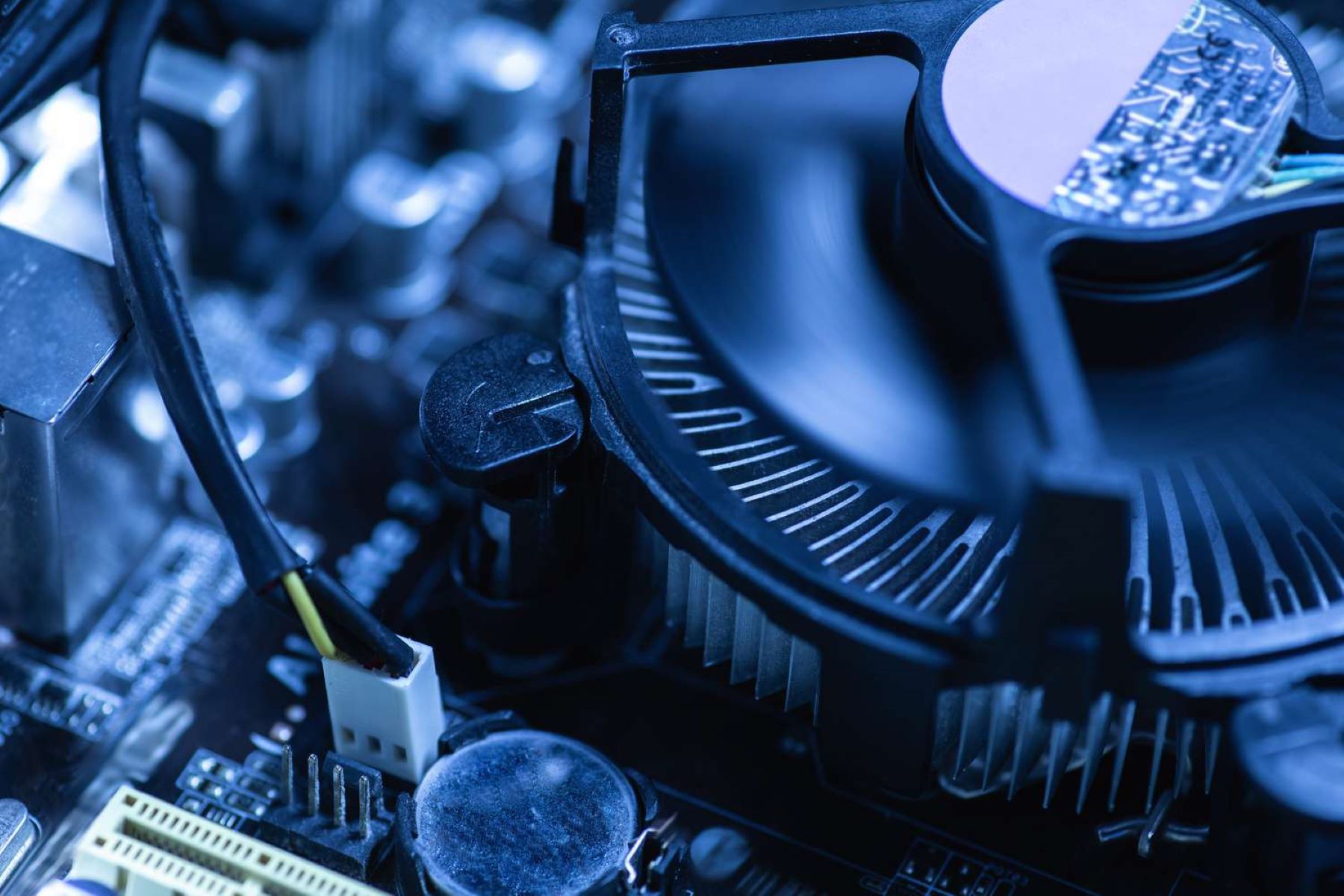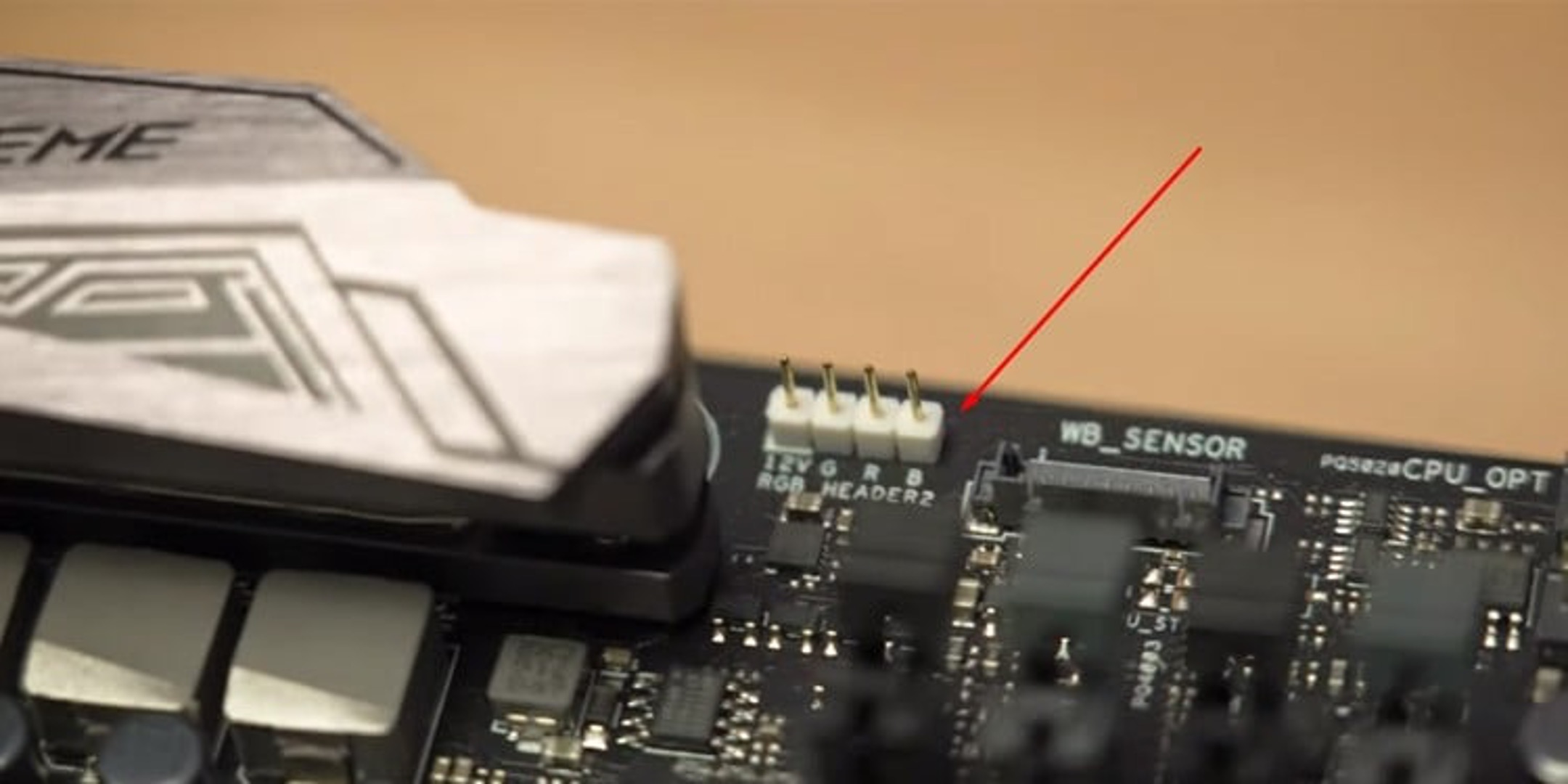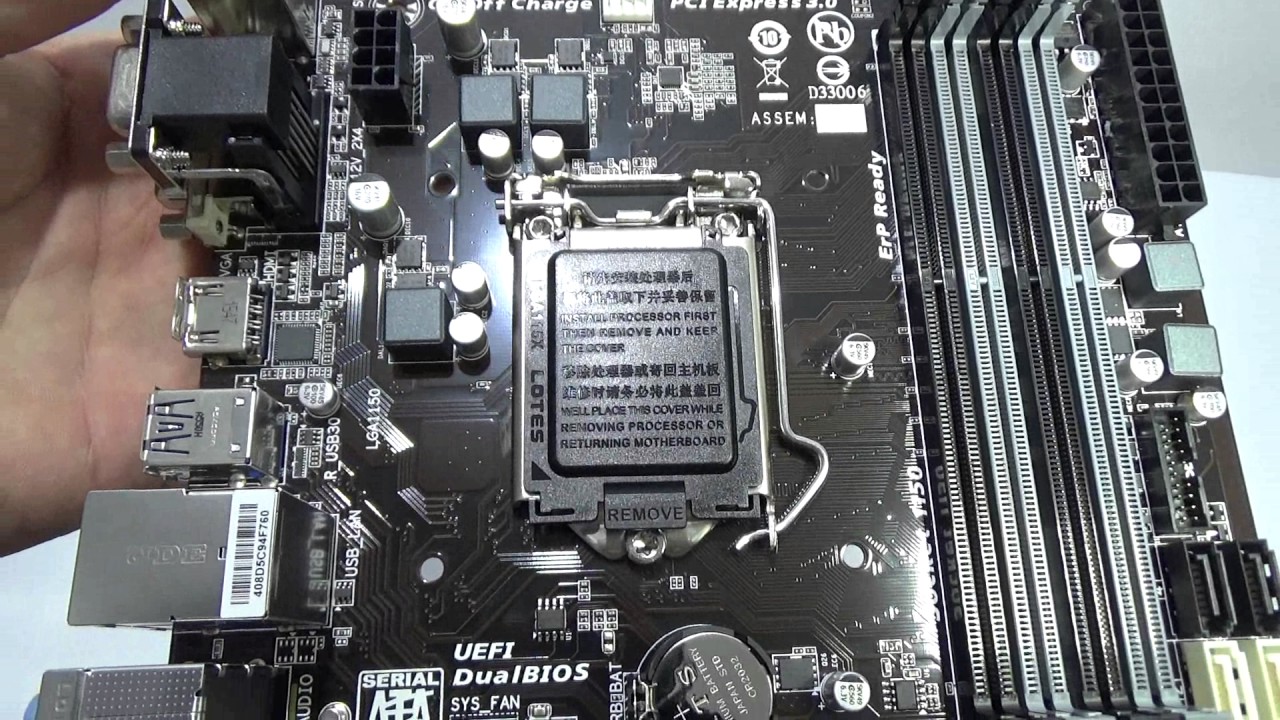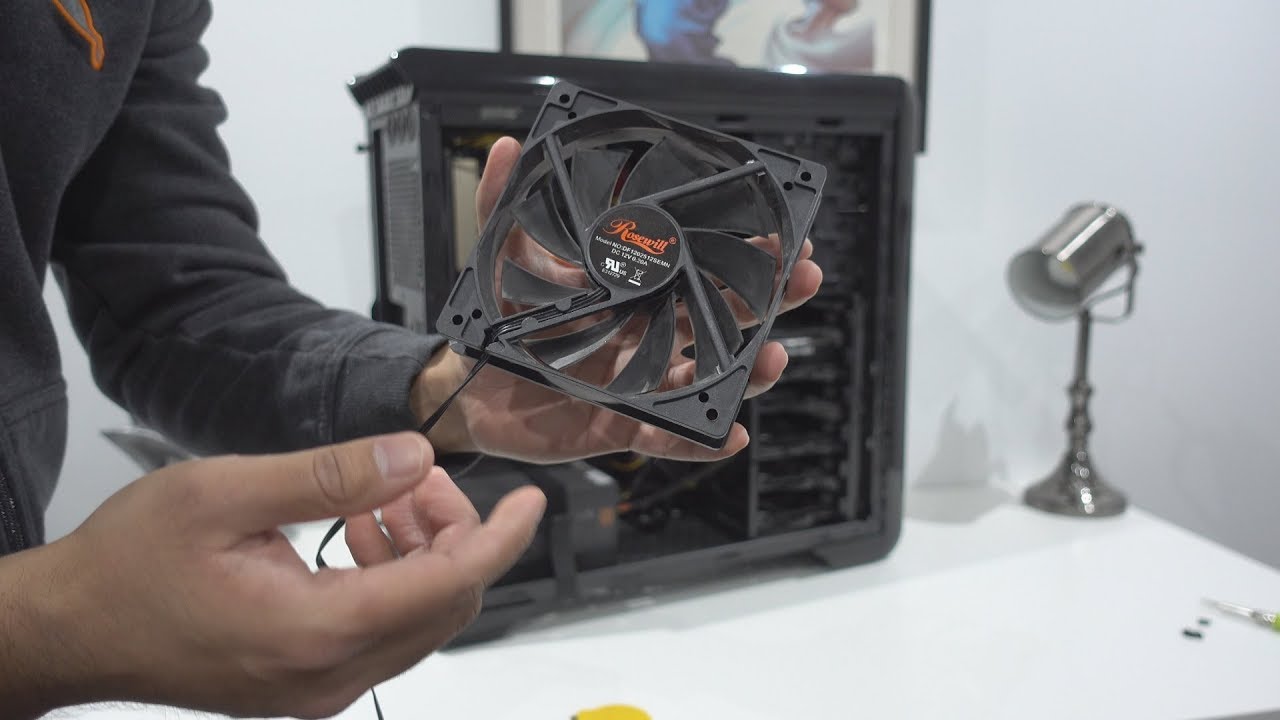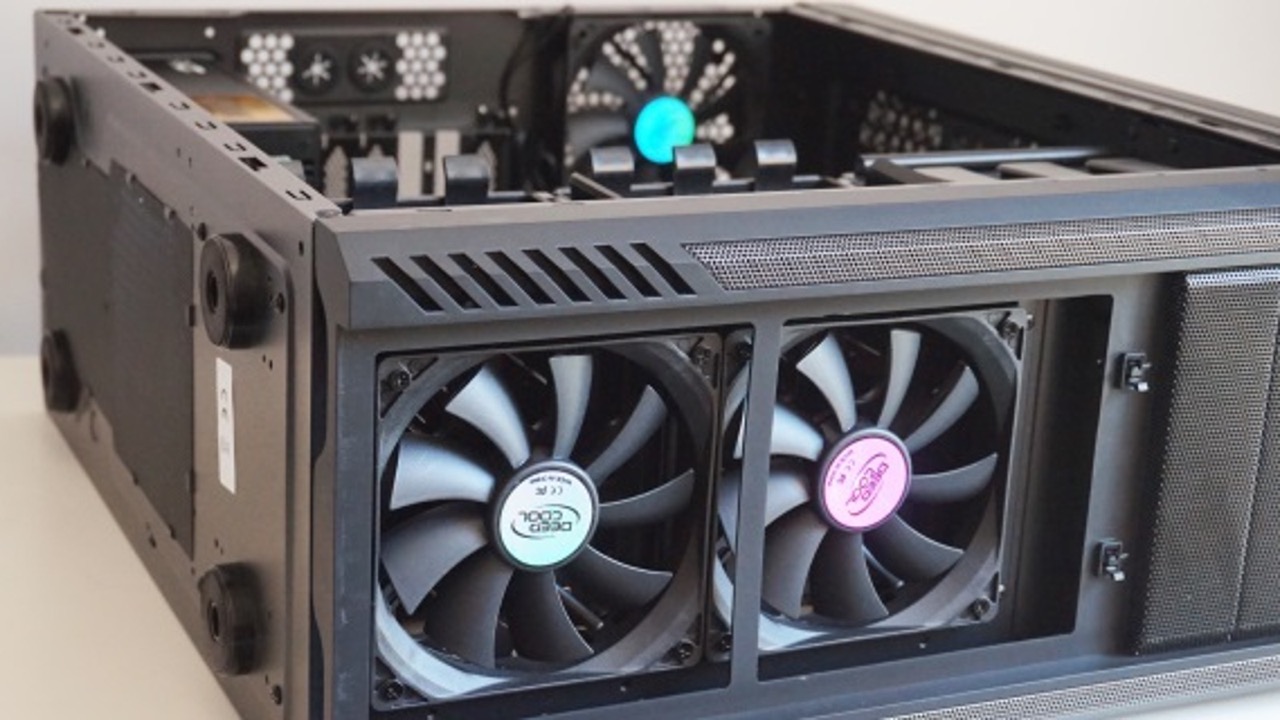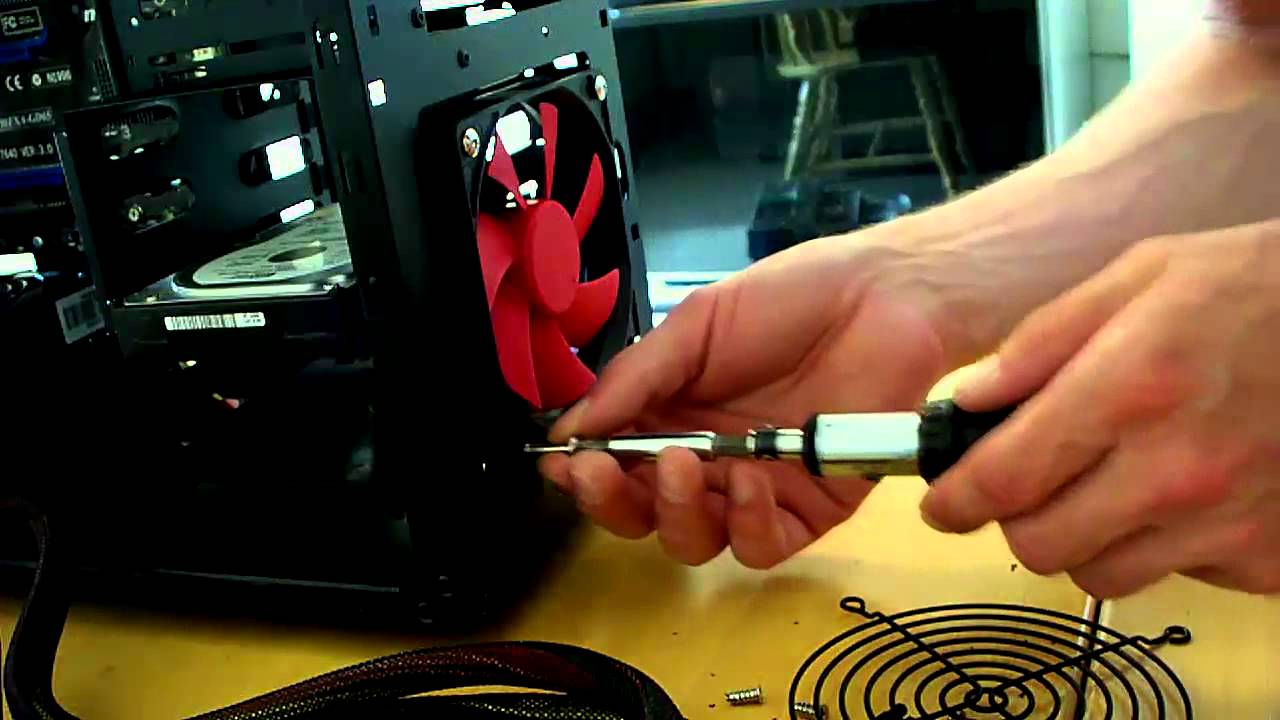Introduction
Welcome to the world of computer hardware! As technology advances, so does the need for efficient cooling solutions to keep our valuable components running smoothly. One essential component in a computer system is the fan, which helps regulate the temperature and maintain a stable environment inside the case.
In this article, we will delve into the realm of sys fans, specifically focusing on their role within a motherboard. Whether you’re a tech enthusiast, a beginner building your first PC, or simply curious about the inner workings of a computer, this article will provide you with a comprehensive understanding of what sys fans are and their significance.
A sys fan, short for system fan, refers to the fans installed on a motherboard that facilitate the effective circulation of air throughout the computer case. These fans play a crucial role in preventing overheating and ensuring optimal performance and longevity of the hardware components.
There are several types of sys fans available, including exhaust fans, intake fans, and PWM (Pulse Width Modulation) fans. Each type serves a specific purpose and works in tandem to maintain a balanced airflow within the case.
Understanding how sys fans operate and their benefits can help you make informed decisions when it comes to purchasing and installing them in your system. It’s also important to know how many sys fan connectors your motherboard has to ensure compatibility with your desired fan setup.
In this article, we will explore how sys fans work, the advantages they offer, and tips for installing and maintaining them on a motherboard. So, let’s dive in and discover the world of sys fans on motherboards!
What Is a Sys Fan?
A sys fan, short for system fan, is a fan specifically designed to cool and maintain an optimal temperature within a computer case. It is connected to the motherboard and plays a vital role in preventing overheating, which can lead to component failure and system crashes.
The primary function of a sys fan is to circulate air throughout the computer case, ensuring that the hot air generated by the components is expelled and replaced by cooler air. This process helps maintain a balanced and efficient temperature within the system, preventing damage to delicate electronic parts.
Sys fans come in various sizes and designs, ranging from 80mm to 140mm, with larger diameter fans generally providing better airflow. They can be categorized as either exhaust fans or intake fans, depending on their placement and direction of airflow.
Exhaust fans are typically positioned at the rear or top of the case and are responsible for expelling the hot air generated by the components. By creating negative pressure within the case, they draw in fresh air from the intake fans and other openings, promoting efficient airflow.
On the other hand, intake fans are usually located at the front or sides of the case and are responsible for bringing in cool air from the surroundings. This fresh air helps cool the components before getting expelled by the exhaust fans.
Sys fans can also be equipped with PWM (Pulse Width Modulation), which allows for automatic control of fan speed based on temperature sensors. This feature ensures that the fan operates at optimal speed, depending on the system’s cooling requirements, minimizing noise while still effectively cooling the components.
Overall, sys fans are an essential component of a computer system, providing critical cooling functionality to maintain optimal performance and prolong the lifespan of the hardware. Understanding the different types of sys fans and their role in the overall cooling strategy is crucial when planning or upgrading a computer system.
Now that we have a clear understanding of what sys fans are, let’s dive deeper into their importance on a motherboard and explore how they work to keep your system cool and running smoothly.
Types of Sys Fans
When it comes to sys fans, there are several types available, each serving a specific purpose in maintaining the airflow and cooling within a computer system. Understanding these different types can help you choose the right fans for your specific needs.
1. Exhaust Fans
Exhaust fans are the most common type of sys fans and are typically positioned at the rear or top of the computer case. Their main function is to expel hot air generated by the components. By creating negative pressure inside the case, exhaust fans draw in cool air from the intake fans and openings, ensuring efficient airflow and heat dissipation.
2. Intake Fans
Intake fans, as the name suggests, are responsible for bringing in cool air from the surroundings and directing it towards the components. These fans are usually installed at the front or sides of the case, where they draw in fresh air. Intake fans work hand-in-hand with exhaust fans to maintain a constant airflow and prevent the accumulation of hot air within the case.
3. PWM (Pulse Width Modulation) Fans
PWM fans offer a more advanced cooling solution by allowing for automatic control of fan speed based on temperature sensors. These fans can adjust their speed dynamically, depending on the cooling requirements of the system. By operating at optimal speeds, PWM fans help maintain a balance between cooling efficiency and noise levels, ensuring a quiet and cool computing experience.
4. High-Static Pressure Fans
High-static pressure fans are designed to deliver concentrated airflow in situations where there are obstacles or resistance, such as when air needs to be pushed through dense heatsinks or radiator fins. These fans are particularly useful in CPU coolers and liquid cooling systems, where efficient heat dissipation is paramount.
5. RGB Fans
RGB fans are a popular choice for users who prioritize aesthetics in their computer systems. These fans feature built-in RGB lighting effects, allowing you to customize and synchronize the colors and patterns to match your style. RGB fans combine both style and functionality, offering impressive visuals along with adequate cooling performance.
Understanding the different types of sys fans can help you select the right combination for your system, taking into account factors such as airflow requirements, noise levels, and aesthetics. By choosing the appropriate sys fans, you can ensure efficient cooling and optimal performance for your computer components.
Now that we have explored the various types of sys fans, let’s move on to the next section to understand the importance of sys fans on a motherboard and how they contribute to the overall cooling of your system.
Importance of Sys Fans on a Motherboard
Sys fans play a crucial role in maintaining the overall health and performance of a computer system, and their importance cannot be overstated. Let’s explore why sys fans are so vital when it comes to a motherboard’s functionality.
1. Temperature Regulation
The primary purpose of sys fans is to regulate the temperature inside the computer case. Components such as the CPU, GPU, and motherboard generate heat during operation, and excessive heat can lead to performance issues and even permanent damage. Sys fans help dissipate this heat by circulating cool air and expelling hot air, preventing overheating and ensuring the components operate within safe temperature ranges.
2. Component Longevity
Proper cooling provided by sys fans significantly increases the lifespan of the computer components. Overheating can cause premature wear and degradation of various parts, including the CPU, GPU, RAM, and even the motherboard itself. By maintaining a consistently cool environment, sys fans help prolong the life of these expensive components, saving you from costly replacements or repairs.
3. Stability and Performance
When a computer system operates at high temperatures, it’s more likely to experience stability issues and performance degradation. Overheating can cause components to throttle their performance or shut down altogether to prevent damage. By utilizing sys fans to keep temperatures in check, you can ensure a more stable system and maintain optimal performance under heavy workloads or demanding tasks.
4. Dust and Debris Prevention
Sys fans also aid in preventing the accumulation of dust and debris inside the computer case. As air is circulated, the fans help push out dust particles and prevent them from settling on the components. This not only helps improve airflow but also reduces the risk of short circuits or component malfunctions caused by dust buildup.
5. Noise Reduction
While it’s not the primary function, sys fans can help reduce overall system noise. By maintaining efficient cooling, the fans can prevent components from reaching high temperatures, which would result in the fans having to run at full speed to compensate. Operating at lower speeds reduces noise levels, leading to a quieter computing experience.
Overall, sys fans are an integral part of a motherboard’s cooling strategy, and their importance cannot be overlooked. By effectively regulating temperatures, extending component longevity, enhancing system stability and performance, and preventing dust buildup, sys fans contribute to a healthier and more reliable computer system.
In the next section, we will delve into how sys fans work and the mechanisms behind their cooling capabilities.
How Sys Fans Work
Sys fans are a crucial component in maintaining the overall temperature and airflow within a computer system. Understanding how sys fans work can help you appreciate their role in keeping your components cool and operating optimally. Let’s explore the mechanisms behind the operation of sys fans.
1. Airflow Direction
Sys fans are strategically placed within the computer case to ensure the proper circulation of air. Intake fans are positioned to bring in cool air from the surroundings and direct it towards the components, while exhaust fans expel hot air generated by the components out of the case. This continuous flow of air helps maintain a balanced temperature and prevents the buildup of heat within the system.
2. Blade Design
The blade design of sys fans plays a significant role in their effectiveness. Fan blades are curved or angled to create pressure differences and direct air in a specific direction. The size and shape of the blades impact the amount of air the fan can move, and larger, well-designed blades can provide greater airflow with lower noise levels.
3. Fan Speed
The speed at which sys fans operate determines the amount of airflow they can generate. The speed is measured in RPM (revolutions per minute), and higher RPM results in more air movement. The fan speed can be adjusted manually or automatically through the use of fan control software or built-in motherboard features. This enables users to find a balance between cooling performance and noise levels based on their specific needs.
4. Fan Connectors
Sys fans are connected to the motherboard via fan connectors or headers. These connectors provide power to the fans and allow for speed control. Most modern motherboards have multiple fan connectors, which enables users to connect and control several sys fans simultaneously. Some connectors also support PWM (Pulse Width Modulation) control, allowing for more precise fan speed adjustments based on temperature sensors.
5. Sensor Monitoring
Many modern motherboards are equipped with temperature sensors that monitor the system’s thermal conditions. These sensors provide real-time feedback to the motherboard, enabling it to adjust fan speeds accordingly. This ensures that sys fans operate efficiently, increasing speed when temperatures rise and decreasing speed when cooling requirements are lower.
By carefully considering factors such as airflow direction, blade design, fan speed, fan connectors, and sensor monitoring, sys fans work together to ensure proper cooling of the computer system. Working in harmony with other cooling components such as heat sinks and liquid cooling systems, sys fans contribute to maintaining optimal temperatures and preventing heat-related issues.
Now that we understand how sys fans work, let’s explore the benefits they offer for a computer system in the next section.
Benefits of Having Sys Fans on a Motherboard
Sys fans play a crucial role in maintaining the overall temperature and airflow within a computer system. Having sys fans installed on a motherboard offers numerous benefits that contribute to the performance, longevity, and reliability of the system. Let’s explore some of the key benefits of having sys fans on a motherboard.
1. Effective Cooling
The primary benefit of sys fans is their ability to effectively cool the components within the computer case. By circulating cool air and expelling hot air, sys fans help regulate temperatures and prevent overheating. This ensures that the CPU, GPU, and other components operate within safe temperature ranges, minimizing the risk of performance throttling, instability, and damage to the hardware.
2. Improved Component Longevity
By keeping temperatures in check, sys fans help extend the lifespan of the computer components. High temperatures can cause premature wear and degradation of various hardware elements, including the CPU, GPU, RAM, and motherboard. With proper cooling provided by sys fans, the components can operate more efficiently and experience less stress, leading to increased longevity and reduced chances of component failure.
3. Enhanced System Stability
Sys fans play a critical role in ensuring system stability. When components overheat, they can become unstable and may experience performance degradation or even system crashes. By maintaining optimal temperatures, sys fans help maintain stability and ensure consistent performance even under heavy workloads or demanding tasks such as gaming or video editing.
4. Reduced Noise Levels
While sys fans are primarily designed for cooling, they can also contribute to reducing overall system noise levels. By operating at lower speeds, sys fans can maintain efficient cooling without the need for running at full speed, which can be noisy. This results in a quieter computing experience, especially in systems with multiple fans.
5. Dust and Debris Prevention
Sys fans also aid in keeping the system clean by preventing the accumulation of dust and debris. As the fans circulate air, they help push out dust particles and prevent them from settling on the components. This reduces the risk of dust-related issues such as clogging of heatsinks, fans, and air filters, which can impede airflow and lead to higher temperatures. By reducing dust buildup, sys fans contribute to maintaining optimal cooling performance.
6. Customization and Aesthetics
Many sys fans come with RGB lighting options, allowing users to customize and enhance the visual aesthetics of their computer systems. With the ability to synchronize lighting effects and colors, sys fans can add a touch of personal style and create an appealing visual impact, making the system stand out.
Overall, the benefits of having sys fans on a motherboard are numerous. They provide effective cooling, improve component longevity, enhance system stability, reduce noise levels, prevent dust accumulation, and offer customization options. Investing in quality sys fans and a well-planned fan configuration is crucial for maintaining a cool, reliable, and high-performing computer system.
Next, let’s explore how to determine the number of sys fan connectors on a motherboard to ensure compatibility with your desired fan setup.
Determining the Number of Sys Fan Connectors on a Motherboard
When planning to install sys fans on a motherboard, it’s essential to determine the number of sys fan connectors available. Sys fan connectors, also known as fan headers, are the physical ports on the motherboard to which the sys fans are connected. Knowing the number of available connectors will help ensure compatibility with your desired fan setup. Let’s look at how to determine the number of sys fan connectors on a motherboard.
1. Refer to the Motherboard Manual
The motherboard manual is an invaluable resource when it comes to identifying the number and locations of sys fan connectors. The manual provides specific details about the motherboard’s features and layout, including the fan connector locations and the maximum number of fans supported. Consult the manual that came with your motherboard, or visit the manufacturer’s website and download the manual if you don’t have a physical copy.
2. Physical Inspection
Inspecting the motherboard itself can help you identify the sys fan connectors. Sys fan connectors are typically small, three- or four-pin connectors located near the edges of the motherboard. They are often labeled as “SYS_FAN,” “CHA_FAN,” or a similar variation. Look for these connectors and count how many are available.
3. Online Resources and Community Forums
If you don’t have access to the motherboard manual or are unable to physically inspect the motherboard, online resources can be a valuable tool. Visit the manufacturer’s website or search for your specific motherboard model online. Manufacturers often provide detailed specifications and documentation that can inform you of the number of sys fan connectors. Community forums related to PC building and motherboard discussions are also useful sources of information, as fellow users may have already determined the number of sys fan connectors on similar models.
4. Consult with the Manufacturer or Retailer
If you still have doubts or difficulty determining the number of sys fan connectors on your motherboard, contacting the manufacturer or the retailer from whom you purchased the motherboard can provide clarity. The manufacturer’s customer support or technical support team can provide accurate information regarding the specifications and features of the motherboard, including the number and type of sys fan connectors.
It’s worth noting that some motherboards may also offer additional fan hubs or expansion options to accommodate more sys fans. These hubs can provide additional fan headers or even allow for the control of fan speed and RGB lighting. Checking for these additional options can help expand the number of sys fans you can connect to your motherboard.
By determining the number of sys fan connectors on a motherboard, you can plan your fan setup accordingly. This ensures compatibility and allows you to optimize the cooling performance of your computer system while utilizing the available resources effectively.
In the next section, we will provide some essential tips for installing and maintaining sys fans on a motherboard.
Tips for Installing and Maintaining Sys Fans on a Motherboard
Installing and maintaining sys fans on a motherboard is a crucial aspect of ensuring efficient cooling and optimal performance of your computer system. Whether you are a beginner or an experienced PC builder, these tips will help you install and maintain sys fans effectively. Let’s explore some essential tips:
1. Plan Your Fan Setup:
Before installing sys fans, carefully plan the fan placement to optimize airflow. Consider factors such as the position of intake and exhaust fans, the direction of airflow, and the location of components generating the most heat. Proper planning will result in better cooling and prevent hotspots within the case.
2. Securely Connect Fans:
When connecting sys fans to the motherboard, make sure the connections are secure and properly inserted. Loose connections can lead to fan malfunctions or noisier operation. Ensure that the fan cables are not blocking other components or interfering with other cables within the system.
3. Use Fan Filters:
Consider using fan filters to prevent dust and debris from entering the system. Filters can be attached to intake fans to minimize the accumulation of dust on components, which can impede airflow and hinder cooling performance. Regularly clean or replace the filters to maintain proper airflow.
4. Maintain Cable Management:
Efficient cable management involves organizing and routing cables in a way that maximizes airflow and minimizes obstruction. Neatly arrange cables and use cable ties or routing channels to keep them away from fans and components. This will improve the overall airflow and facilitate maintenance.
5. Regularly Clean Fans:
Dust buildup on fan blades can decrease cooling efficiency and lead to increased noise. Regular cleaning of fans is essential to maintain optimal performance. Use compressed air or a soft brush to gently remove dust from the fan blades. Avoid using excessive force that could damage the fans.
6. Monitor Fan Speed and Temperatures:
Keep an eye on fan speeds and temperatures to ensure that your sys fans are operating effectively. Use monitoring software or the BIOS settings to check fan speed and temperature readings. Adjust fan speed settings if necessary, ensuring a balance between cooling performance and noise levels.
7. Consider Fan Placement for Liquid Cooling:
If you are using a liquid cooling system, carefully plan the placement of fans to support the radiator. Ensure that the fans are properly aligned with the radiator for efficient heat dissipation. Follow the manufacturer’s recommendations for fan positioning to achieve optimal cooling performance.
8. Avoid Overloading Fan Connectors:
Be mindful of the power limitations of the fan connectors on your motherboard. Avoid overloading a single fan header with multiple fans or using adapter cables that draw excessive power. Consider using fan splitters or fan hubs to distribute power evenly across multiple sys fans.
Following these tips will help ensure proper installation and maintenance of sys fans on your motherboard. By optimizing fan placement, securing connections, managing cables, cleaning fans, monitoring temperatures, and considering specific requirements for liquid cooling, you can maintain efficient cooling performance and prolong the lifespan of your computer components.
In the concluding section, we will summarize the key points discussed throughout the article.
Conclusion
In conclusion, sys fans are an integral part of a motherboard’s cooling system, playing a critical role in maintaining optimal temperatures and ensuring the longevity and performance of your computer system.
We explored the different types of sys fans, including exhaust fans, intake fans, PWM fans, high-static pressure fans, and RGB fans. Each type serves a specific purpose in maintaining balanced airflow and providing adequate cooling to your components.
We also discussed the importance of sys fans on a motherboard, highlighting their role in temperature regulation, component longevity, system stability, noise reduction, and dust prevention. By effectively cooling the components and preventing overheating, sys fans contribute to a reliable and high-performing system.
Understanding how sys fans work is essential in optimizing their performance. We learned about airflow direction, blade design, fan speed, fan connectors, and sensor monitoring that collectively contribute to the cooling capabilities of sys fans.
The benefits of having sys fans on a motherboard are significant. We explored how sys fans provide effective cooling, improve component longevity, enhance system stability, reduce noise levels, prevent dust accumulation, and offer customization options.
Determining the number of sys fan connectors on a motherboard is crucial for planning your fan setup and ensuring compatibility. The motherboard manual, physical inspection, online resources, and contacting the manufacturer or retailer are helpful methods to identify the number of available sys fan connectors.
Installing and maintaining sys fans on a motherboard requires careful consideration. Timely cleaning, secure connections, fan filters for dust prevention, cable management, and monitoring fan speeds and temperatures are vital practices for optimal cooling performance and system health.
In summary, sys fans are essential components for maintaining a cool and reliable computer system. By choosing the right type of sys fans, understanding their operating mechanisms, and employing proper installation and maintenance practices, you can ensure efficient cooling, improved performance, and prolonged lifespan of your valuable hardware components.







